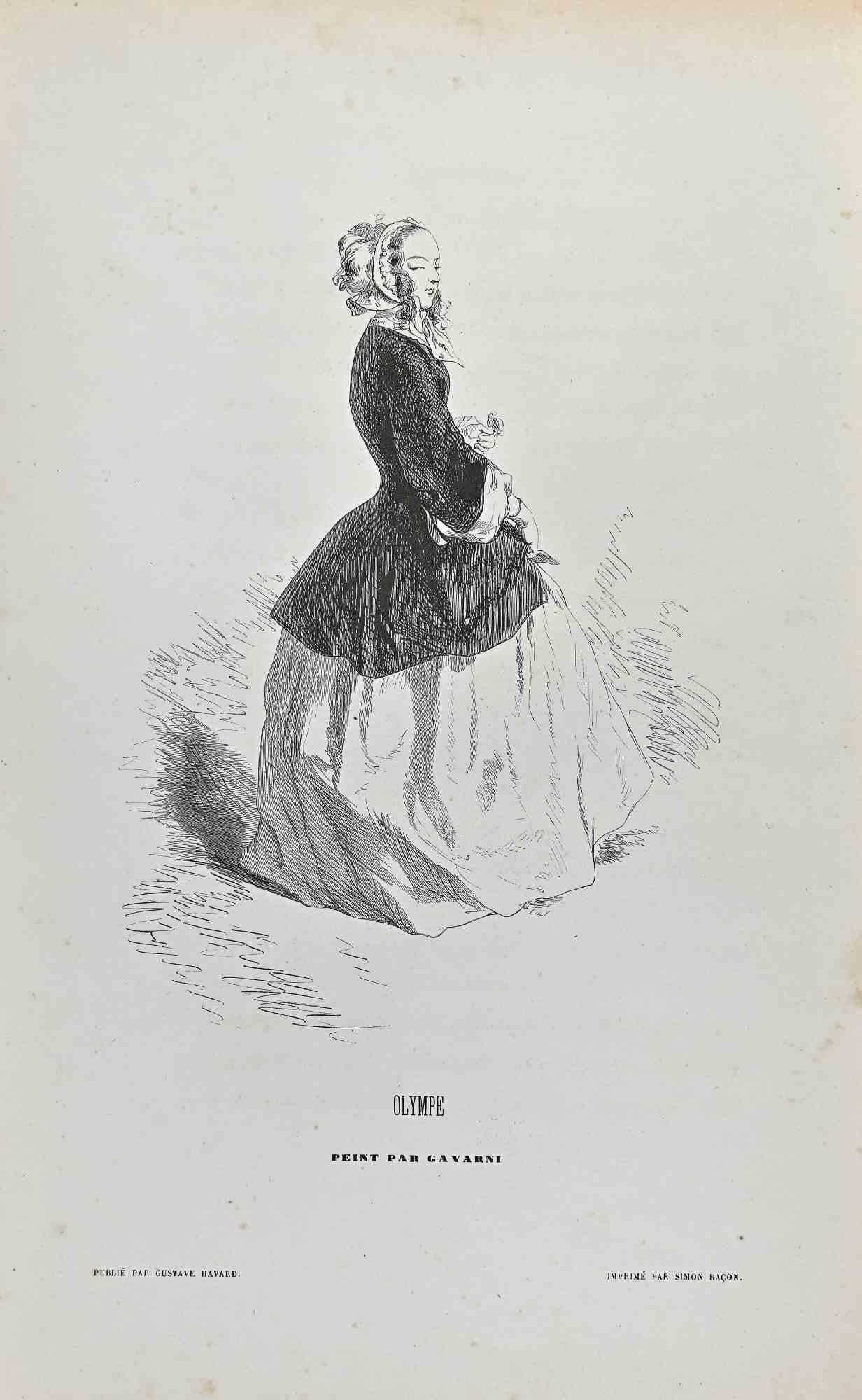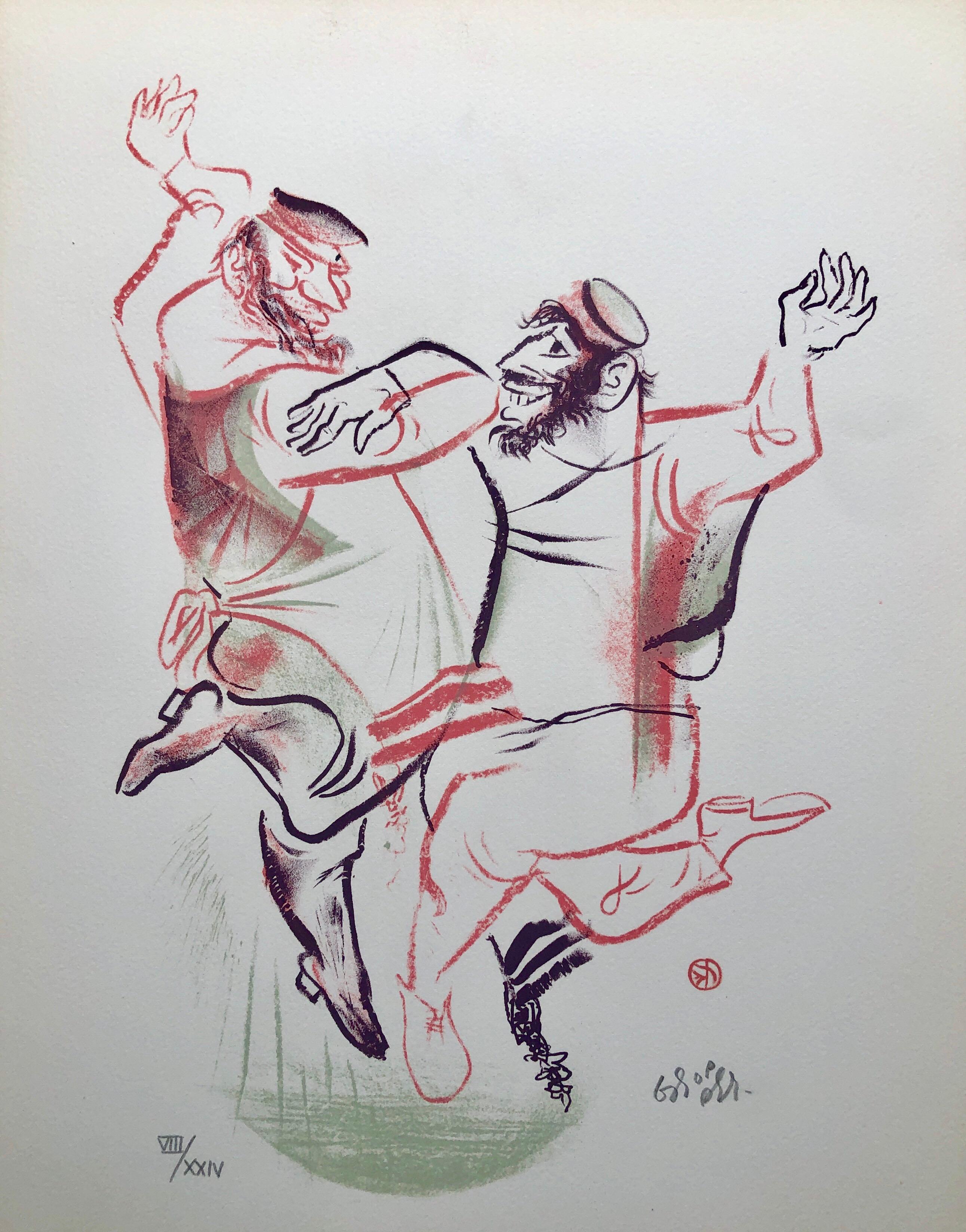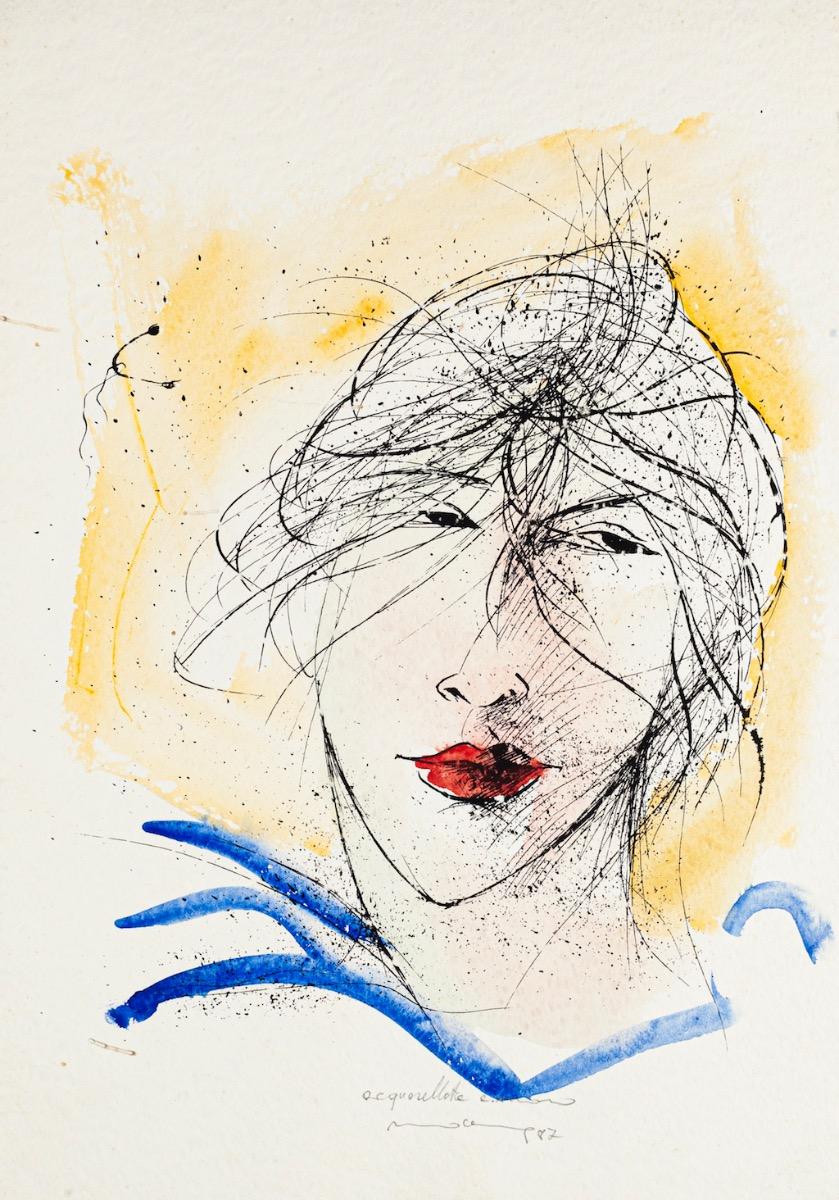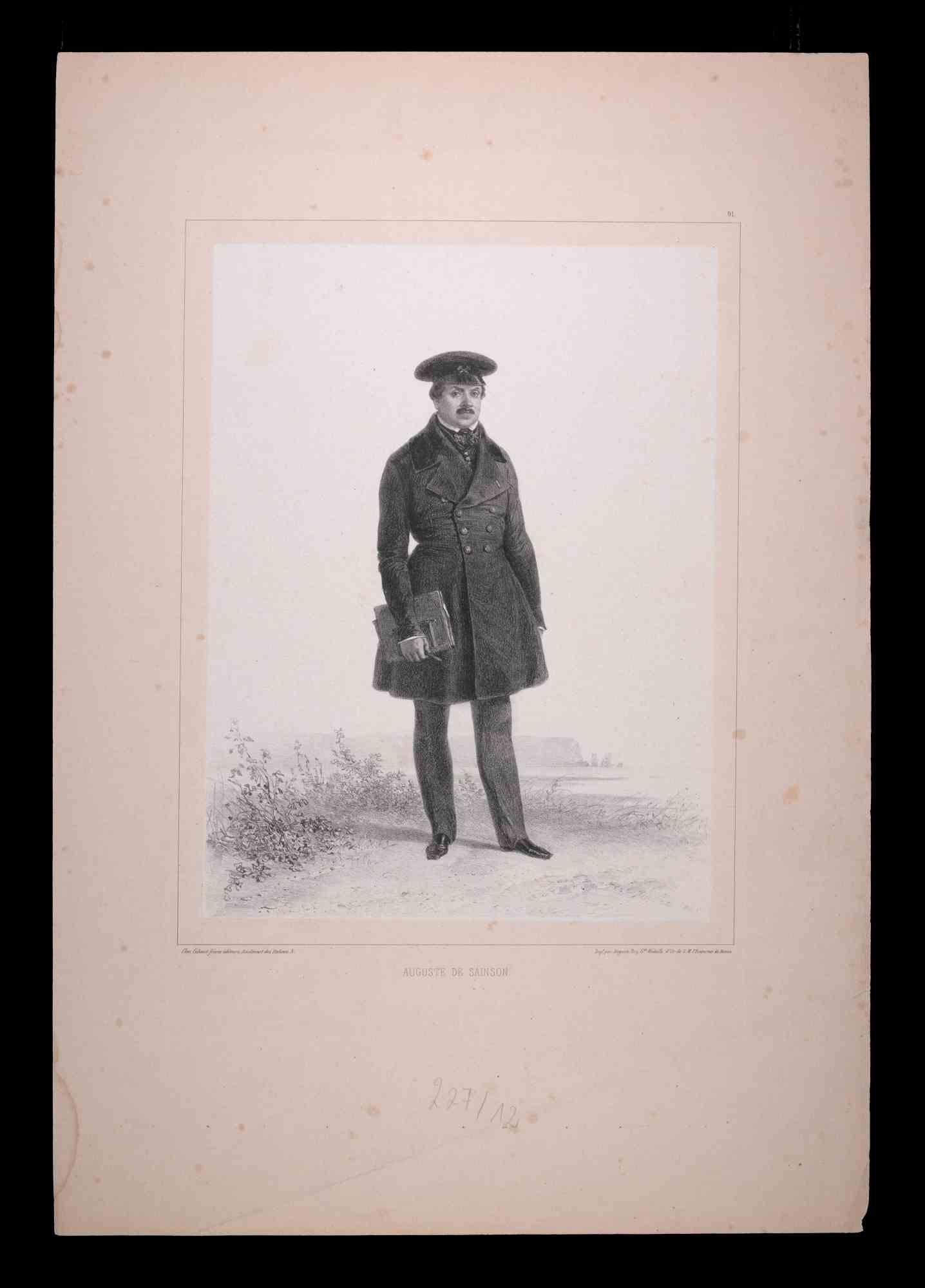Items Similar to Sea Creature and Sky-Eyes - Lithograph by Roger Chapelain-Midy - 1974
Want more images or videos?
Request additional images or videos from the seller
1 of 6
Roger Chapelain-MidySea Creature and Sky-Eyes - Lithograph by Roger Chapelain-Midy - 19741974
1974
About the Item
Sea Creature and Sky-Eyes is a colored lithograph realized by the artist Roger Chapelain-Midy in 1974.
Hand-signed by the artist on the lower right. Numbered on the lower left. Edition 31/100.
Original print in very good conditions.
The artwork is represented through deft stokes in a harmonious manner and creates an impressive mysterious scene.
- Creator:Roger Chapelain-Midy
- Creation Year:1974
- Dimensions:Height: 19.69 in (50 cm)Width: 27.56 in (70 cm)Depth: 0.04 in (1 mm)
- Medium:
- Movement & Style:
- Period:
- Framing:Framing Options Available
- Condition:Insurance may be requested by customers as additional service, contact us for more information.
- Gallery Location:Roma, IT
- Reference Number:
About the Seller
4.9
Platinum Seller
These expertly vetted sellers are 1stDibs' most experienced sellers and are rated highest by our customers.
1stDibs seller since 2017
6,827 sales on 1stDibs
Typical response time: 4 hours
- ShippingRetrieving quote...Ships From: Rome, Italy
- Return PolicyA return for this item may be initiated within 14 days of delivery.
More From This SellerView All
- Olympe - Lithograph By Paul Gavarni - mid 19th centuryBy Paul GavarniLocated in Roma, ITOlympe is a lithograph on ivory-colored paper, realized by the French draftsman Paul Gavarni (alias Guillaume Sulpice Chevalier Gavarni, 1804-1866) in the mid-19th Century. Signed o...Category
Mid-19th Century Modern Figurative Prints
MaterialsLithograph
- Theatrical Costume - Lithograph on Paper - Late 19th CenturyLocated in Roma, ITTheatrical Costume is original lithography realized by an Anonymous artist in the late 19th Century. Good conditions with two stain on the lower and some decoloration on the margins of its Passpartout. The artwork represents a standing man wearing the theatrical costume, skillfully depicted through soft and precise strokes, the artwork is created with congruous harmonious colors from historical costume...Category
Late 19th Century Modern Figurative Prints
MaterialsLithograph
- Woman's Face - Lithograph by Mario Ceriacca - Late 20th CenturyLocated in Roma, ITWoman's Face is an original Hand-colored lithography artwork realized by Mario Ceriacca. Hand-signed. Good conditions except for a small hole along the right margins that does not ...Category
20th Century Modern Figurative Prints
MaterialsLithograph
- Auguste De Sainson - Original Lithograph by Denis Auguste Marie Raffet - 1848By Denis Auguste Marie RaffetLocated in Roma, ITAuguste De Sainson is an original Litograph realized by Denis Auguste Marie Raffet in 1848. Signed and dated in plate on the lower right corner. Good condition included a cream col...Category
1840s Modern Portrait Prints
MaterialsLithograph
- Jean Henry Leveillé - Original Lithography by Denis Auguste Marie Raffet - 1848By Denis Auguste Marie RaffetLocated in Roma, ITJean Henry Lebeillé is an original Lithograph realized by Denis Auguste Marie Raffet in 1848. Hand-signed and dated with pencil by the artist on the lower ...Category
1840s Modern Portrait Prints
MaterialsLithograph
- Danseuse a Java - Lithograph by Auguste Wahlen - 1844Located in Roma, ITDanseuse a Java is a hand colored lithographs realized by Auguste Wahlen in 1844. Good condition. The artwork belongs to the Suite Moeurs, usages et costumes de tous les peuples du...Category
1840s Modern Figurative Prints
MaterialsLithograph
You May Also Like
- Jewish Shtetl Hasidic Wedding Dance Judaica Lithograph Yiddish Social RealismBy William GropperLocated in Surfside, FLHand signed in pencil and numbered with Roman numerals 8/24. A very small edition. Old Lower East Side of New York or East European Shtetl. Jewish Shtetl Hasidic Klezmer Musicians. ...Category
Mid-20th Century Modern Figurative Prints
MaterialsLithograph
- Jewish Shtetl Klezmer Wedding Tanz Judaica Lithograph WPA Yiddish Social RealistBy William GropperLocated in Surfside, FLHand signed in pencil and numbered with Roman numerals 8/24. A very small edition. Old Lower East Side of New York or East European Shtetl. Jewish Shtetl Klezmer Musicians. humorous...Category
Mid-20th Century Modern Figurative Prints
MaterialsLithograph
- Woman Walking Away from GentlemanBy Rudolf BauerLocated in New Orleans, LAA well dressed woman takes leave of a gentleman. Rudolf Bauer was born in 1889, in Lindenwald, Germany-Poland. The son of a wealthy engineer, Bauer became an essential part of the avant-garde movement and the birth of non-objective art in the early 1920's. Bauer began his studies at the Academy of Fine Arts in Berlin in 1905, where he learned the fundamentals and produced beautifully stylized figurative drawings. In 1912, Bauer met Herwarth Walden, a promoter of the avant-garde movement and founder of Der Sturm Art Gallery. Bauer became a member of Der Sturm, and was represented in group exhibitions along with Kandinsky, Picasso, Chagall, Klee et al. By 1922, Bauer had participated in 80 Der Sturm exhibitions in Belgium, Denmark, Great Britain, Italy, et al. In 1917, Bauer had his first one-man show at Der Sturm Gallery, exhibiting 120 works. By 1921, with his many one-man and group exhibitions, and his significant publications of his theories on art, Bauer became Germany's leading abstract expressionist painter. In 1929, Bauer founded his own private museum, Das Geistreich-Bauer (The Realm of the Spirit). In 1933, Hitler became Chancellor of the German Republic and with that modern art was branded as "sub-human". Walden closed Der Sturm and fled Germany. The purge of modern artists and curators began, but at the same time Bauer was having his work exhibited at the new Museum of Modern Art in New York City. Despite Hitler's proclamations of the "degeneracy" of modern art, Bauer continued his mission, the free expression in art, writing dictums and creating art. Meanwhile, Solomon R. Guggenheim, the famous American philanthropist, had been acquiring Bauer's work; so many pieces in fact that that he could no long fit his work within the confines of his residential suite at the Plaza Hotel in New York. In 1936, Guggenheim decided to exhibit his entire collection of Bauer's work in one venue, at the Gibbes Memorial Art Gallery in Charleston, SC. Later that year, the famous Jeu de Paume, a division of the Louvre, in Paris, honored Bauer with a one-man exhibition. As a result of the show, the Louvre purchased one of Bauer's oil paintings. Upon his return from the show at Jeu de Paume, and despite the fact he was not Jewish, Bauer was arrested and sent to a concentration camp. Filippo Marinetti...Category
Early 20th Century Modern Figurative Prints
MaterialsLithograph
- Gretchen & EricBy Robert LongoLocated in New York, NYFrom the artist’s iconic, Men in the Cities series, Robert Longo created Gretchen & Eric in 1985, each as an original lithograph measuring 72 x 35 7/8 in. (182.9 x 91.1 cm), unframed...Category
20th Century Modern Portrait Prints
MaterialsLithograph
- The Human Comedy - LithographBy (after) Pablo PicassoLocated in Collonge Bellerive, Geneve, CHAfter Pablo Picasso The Human Comedy - Lithograph after an original drawing, as published in the journal "Verve" Printed signature and date Dimensi...Category
1950s Modern Figurative Prints
MaterialsLithograph
- Jewish Shtetl Mother-in-law Klezmer Wedding Dance Judaica Lithograph Yiddish WPABy William GropperLocated in Surfside, FLHand signed in pencil and numbered. A very small edition. Old Lower East Side of New York or East European Shtetl. Jewish Shtetl Hasidic Klezmer Musicians. humorous Yiddish Chassidic art. The New-York born artist William Gropper was a painter and cartoonist who, with caricature style, focused on social concerns, and was actively engaged in support of the organized labor movement throughout his career. This original color lithograph print is done in the iconic style of the artist's oeuvre. Born to Harry and Jenny Gropper in 1897, William was raised in New York City's Lower East Side. His parents were Jewish immigrants from Romania and Ukraine, and young William grew up in relative poverty, watching his family struggle to achieve that sought-after American dream. His father, a bright and college-educated man, was unable to find employment that worthy of his intellect. His mother, meanwhile, worked as a seamstress from home. Coupled with the devastating loss of an aunt to the infamous Triangle Factory fire of 1911, significant childhood factors created the foundation that led to Gropper’s exploration of the American experience. Early on, Gropper displayed an extraordinary, natural skill for art. By 1912, he was already studying under the instruction of George Bellows and Robert Henri at the Ferrer School in Greenwich Village. During his time at school, Gropper was also awarded a prestigious scholarship to study at the National Academy of Design. However, he refused to fit into convention and was swiftly expelled from the Academy. After his expulsion, Gropper returned home to help financially by assisting his mother and taking a shop position. However, he didn't abandon art academia and soon presented a portfolio to the New York School of Fine Art which earned him a scholarship for study. Gropper obtained his first significant job as a cartoonist for the New York Tribune in 1917. While working as a staff cartoonist for the Tribune, he also contributed drawings to publications like Vanity Fair, New Masses, The Nation, and Freiheit. His interest in the welfare of the American worker, class inequality, and social injustice was central in his work. After publishing the graphic novel Alley Oop in 1930, Gropper's illustration career extended well into the decade. However, he was never exempt from controversy, and his 1935 Vanity Fair cartoon; prompted anger from the Japanese government. As an involved labor organizer and Social Realist activist, Gropper continued to bring attention to his radical reputation with visits to the Soviet Union and Poland. However, his concern with European politics and U.S. social causes didn't slow down his artistic career, and by the late 1930s, he had produced significant murals for American cities like Washington D.C. His 1938 mural Construction of a Dam was commissioned for the Department of the Interior and represents the Social-Realism style that depicts experiences of the worker and everyday societal life. Measuring at a staggering 27ft by 87ft, the piece portrays muscular, robust American laborers scaling rocky hillsides, building infrastructure, and operating heavy machinery. The mural feels undeniably American with golden scenery, denim blues, and steely gray colors. Gropper fits perfectly into Social-Realism because the style exhibits an illustrative flair with strong lines and simple, bold hues. The inspiration for Construction of a Dam sprang from his 1937 travels to the poverty-stricken Dust Bowl area. The trip was sponsored by a Guggenheim Foundation Fellowship, and his drawings of the Grand Coulee and Boulder Dams...Category
Mid-20th Century Modern Figurative Prints
MaterialsLithograph
Recently Viewed
View AllMore Ways To Browse
Vintage Creature
Sea Creatures
Vintage Sea Creatures
Linoleum Prints
Church Etching
October Poster
Posters 1991
Vintage Music Posters Prints
Picasso Plate 1959
17th Century Etching
Etching Print Flowers
Camping In The Woods
Cat Playing
Dior Patron
Hand Signed Print Andy Warhol
Vintage Cross Drawing
1986 Posters
Edo Japan Print





